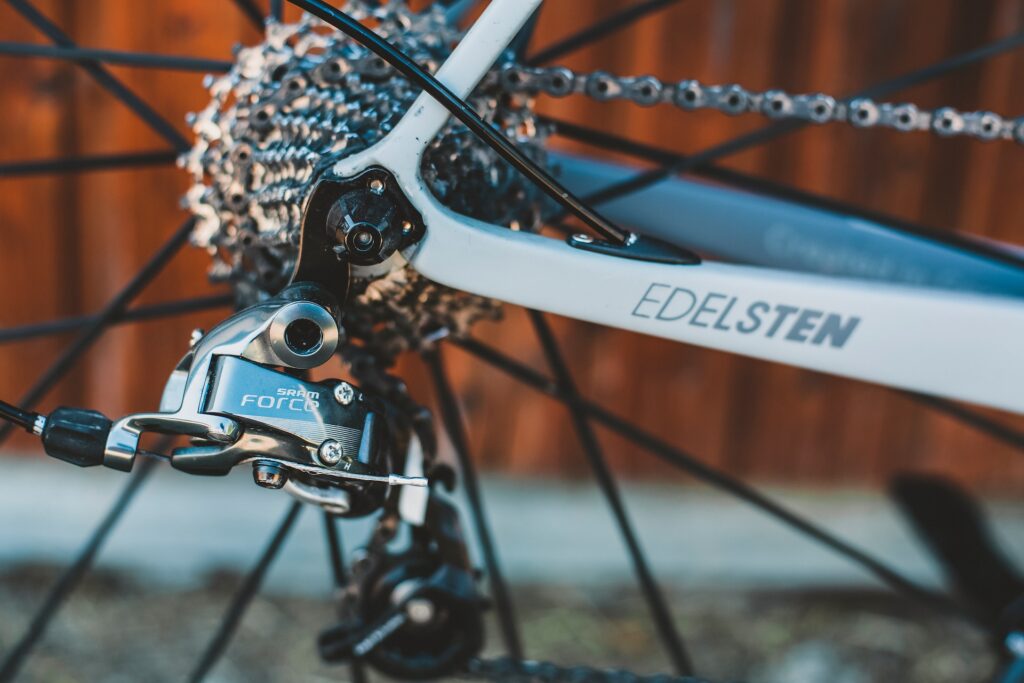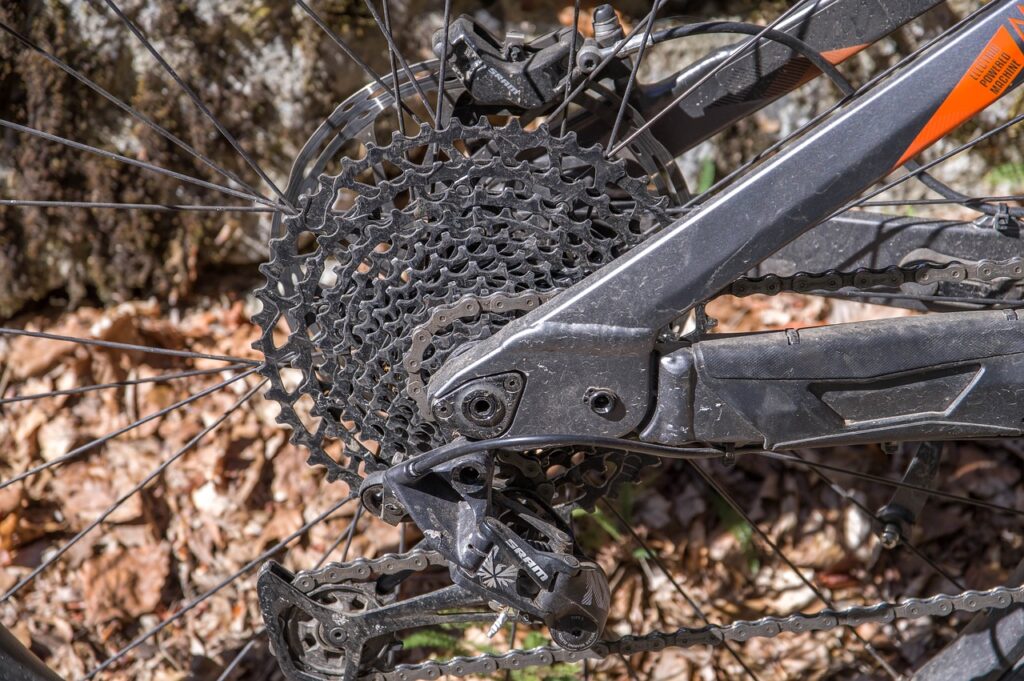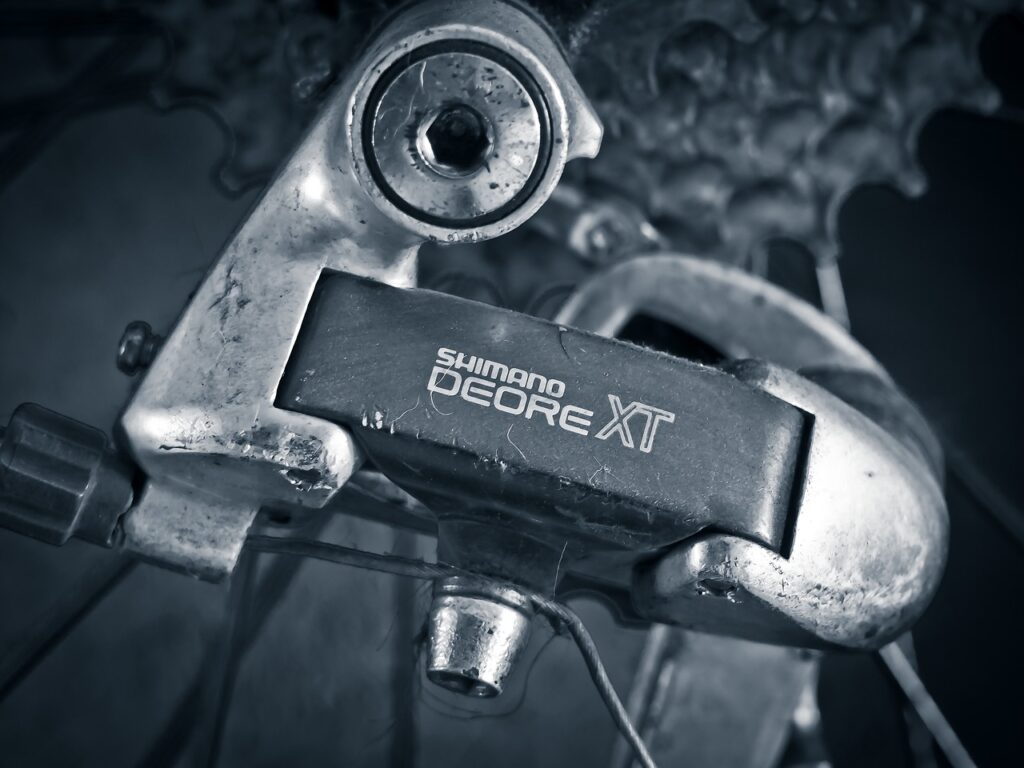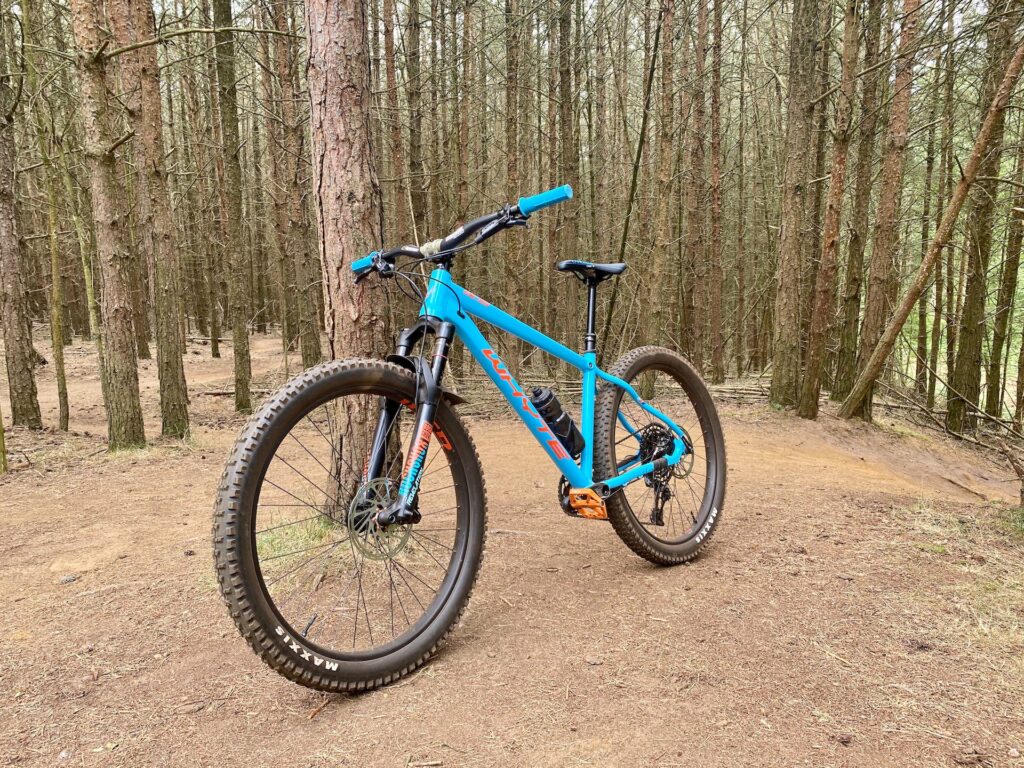Intro
When it comes to mountain biking, having the right gear is crucial for a smooth and enjoyable ride. One important component of a mountain bike is the MTB Rear Derailleur, which is responsible for shifting gears and keeping the chain tensioned. But with so many different types of MTB rear derailleurs available, it can be overwhelming to choose the right one for your bike. In this blog post, we’ll explore the different types of MTB rear derailleurs and how they work, so you can make an informed decision and enhance your riding experience.
Understanding the Function of a MTB Rear Derailleur

When it comes to mountain biking, one of the most crucial components of your bike is the rear derailleur. But what exactly does it do? Understanding the function of a rear derailleur is essential for any mountain biker looking to enhance their riding experience.
The rear derailleur is responsible for gear shifting on your mountain bike. When you want to change gears, whether it’s going up a hill or accelerating on a flat surface, the rear derailleur plays a crucial role. It moves the chain from one gear to another, allowing you to find the perfect gear for your riding needs.
The rear derailleur is designed to handle both up and down gear changes. When you shift to a higher gear, the rear derailleur moves the chain to a larger rear cog, allowing you to pedal with less effort. On the other hand, when you shift to a lower gear, the rear derailleur moves the chain to a smaller rear cog, giving you more power to climb hills or accelerate quickly.
One important aspect to understand is that the rear derailleur works in conjunction with the front derailleur and the gear shifters on your handlebars. By using the gear shifters, you control the movement of the rear derailleur and select the desired gear.
Overall, the rear derailleur is a critical component of your mountain bike’s drivetrain. Understanding how it works and its role in gear changing will not only improve your riding experience but also help you choose the right derailleur for your bike. In the next section, we will explore the two main types of MTB rear derailleurs, so stay tuned!
The Two Main Types of MTB Rear Derailleurs
When it comes to MTB rear derailleurs, there are two main types that you need to know about: the traditional derailleur and the clutch derailleur. Each type has its own set of advantages and considerations, so let’s dive in and explore them.
- 1. Traditional Derailleur:

The traditional rear derailleur is the most common type found on mountain bikes. It consists of a cage that holds the jockey wheels and guides the chain, and a parallelogram mechanism that moves the cage in response to gear shifting. This type of derailleur is known for its reliability, ease of maintenance, and affordability. It is suitable for most riding conditions and is a great choice for beginners or riders on a budget.
When it comes to gear shifting, the traditional derailleur provides smooth and quick transitions between gears. It allows for precise adjustments and ensures minimal chain rub, resulting in a more efficient and enjoyable ride. Additionally, the traditional derailleur is capable of handling both up and down gear changes, making it versatile for various terrains.
- 2. Clutch Derailleur:

The clutch derailleur, also known as a “shadow” derailleur, is a relatively newer technology that has gained popularity among mountain bikers. It features an additional clutch mechanism that helps to maintain chain tension and reduce chain slap, resulting in a quieter and more stable ride.
The clutch mechanism provides increased chain retention, especially during aggressive riding or on rough terrain. It reduces the chances of chain drops and enhances chain stability, allowing you to tackle technical sections with confidence. However, it’s worth noting that the clutch derailleur may require slightly more force to shift gears compared to the traditional derailleur.
The Magic Behind Clutch Derailleurs
The magic behind clutch derailleurs lies in their ability to provide increased chain retention and stability during aggressive and rough rides. With an additional clutch mechanism, these derailleurs have become a game-changer for mountain bikers.
The clutch mechanism, also known as a “shadow” mechanism, is designed to maintain chain tension and reduce chain slap. Chain slap occurs when the chain hits the frame or other parts of the bike, causing a noisy and bumpy ride. By minimizing chain slap, clutch derailleurs provide a quieter and more stable riding experience.
But how does the clutch mechanism work its magic? The mechanism works by adding tension to the rear derailleur cage. This tension counteracts the natural movement of the chain and keeps it securely in place, even on the most technical terrain. As a result, chain drops are significantly reduced, allowing riders to confidently tackle rough trails without worrying about derailing their chains.
While clutch derailleurs offer many benefits, it’s worth noting that they may require slightly more force to shift gears compared to traditional derailleurs. This is due to the increased tension in the clutch mechanism. However, the trade-off is well worth it for riders who prioritize stability and chain retention.
Whether you’re an aggressive rider tackling rough trails or simply looking for a quieter and more stable ride, a clutch derailleur could be the perfect addition to your mountain bike. It’s important to consider your riding style and terrain preferences when deciding whether to invest in a clutch derailleur. However, for those seeking a more secure and stable riding experience, the magic of clutch derailleurs is undeniable.
What Brand is Best?
Shimano, a dominant force in the cycling industry, is renowned for producing high-performance rear derailleurs known for their precision shifting and durability. SRAM, another key player, is celebrated for innovative designs, such as their wireless electronic shifting technology, offering cyclists advanced features and a competitive edge. It will always be SRAM vs SHIMANO.
Picking the Right Size of Derailleur
Picking the right size of derailleur is crucial for ensuring optimal performance and smooth gear shifting on your mountain bike. While it may seem like a minor detail, choosing the correct size can make a significant difference in your riding experience.
The first thing you need to consider when selecting the size of your MTB Rear Derailleur is the number of gears on your bike. Most modern mountain bikes have either 10, 11, or 12-speed drivetrains. Each gear requires a specific derailleur size to ensure proper alignment and tension of the chain.
To determine the appropriate size, you’ll need to check the compatibility of the derailleur with your drivetrain. Manufacturers usually provide guidelines indicating which derailleur sizes are compatible with their gear systems. It’s essential to follow these recommendations to avoid any compatibility issues.
In addition to considering the number of gears, you should also take into account the maximum and minimum cog size that your MTB Rear Derailleur can accommodate. The derailleur’s capacity refers to the difference in teeth between the largest and smallest cogs it can handle. For example, a derailleur with a capacity of 32 teeth can accommodate a maximum cog size of 32 teeth and a minimum cog size of 11 teeth.
Lastly, it’s worth noting that some rear derailleurs are designed specifically for certain wheel sizes. For example, if you have a 27.5-inch wheel, you’ll need to choose a derailleur that is compatible with this size.
Taking the time to pick the right size of derailleur will ensure smooth and efficient gear shifting, preventing any unnecessary wear and tear on your drivetrain. It’s always a good idea to consult with a bike mechanic or do some research to ensure you make the best choice for your specific bike setup.
Compatibility and Installation of MTB Rear Derailleur
When it comes to installing a MTB Rear Derailleur, there are a few important factors to consider to ensure compatibility and proper installation. The rear derailleur plays a crucial role in your bike’s drivetrain, so it’s essential to get it right.
First and foremost, you need to ensure that the rear derailleur you choose is compatible with your bike’s frame and drivetrain. Most rear derailleurs have specific compatibility guidelines provided by the manufacturer, which outline the compatible frame sizes, gear systems, and other specifications. It’s crucial to consult these guidelines to ensure that you’re choosing the right derailleur for your bike.
Once you’ve chosen the right derailleur, it’s time to install it. The installation process may vary depending on your bike’s specific setup, so it’s always a good idea to consult the manufacturer’s instructions or seek the help of a professional bike mechanic.
Generally, the installation process involves removing the old derailleur, adjusting the derailleur hanger (if necessary), attaching the new derailleur to the hanger, and adjusting the cable tension. It’s important to ensure that the derailleur is properly aligned with the rear cogs and that the cable tension is adjusted to allow for smooth and precise gear shifting.
During the installation process, it’s also a good idea to inspect the derailleur hanger for any signs of damage or misalignment. The derailleur hanger is the component that connects the MTB Rear Derailleur to the bike frame, and if it’s bent or damaged, it can affect the derailleur’s performance. If you notice any issues with the derailleur hanger, it’s recommended to replace it before installing the new derailleur.
In summary, ensuring compatibility and proper installation of your rear derailleur is crucial for optimal performance and smooth gear shifting on your mountain bike. By following the manufacturer’s guidelines and seeking professional help if needed, you can ensure a hassle-free installation and enjoy a smooth riding experience.
Care and Maintenance of Your MTB Rear Derailleur

Taking proper care of your MTB Rear Derailleur is essential to ensure its longevity and optimal performance. Here are some tips on how to care for and maintain your rear derailleur.
First and foremost, it’s important to regularly clean your derailleur to prevent the buildup of dirt, grime, and debris. After each ride, take a damp cloth or a soft brush and gently wipe down the derailleur, paying close attention to the jockey wheels and pulleys. This will help to prevent any excess wear and tear on the derailleur and ensure smooth gear shifting.
In addition to cleaning, it’s also crucial to regularly lubricate your derailleur. Apply a few drops of lubricant to the pivot points and moving parts of the derailleur to keep them moving smoothly. Be sure to use a lubricant that is specifically designed for bike components and avoid using excessive amounts.
Another important aspect of derailleur maintenance is regular inspection and adjustment. Check the alignment of the derailleur and make any necessary adjustments to ensure that it is properly aligned with the rear cogs. Additionally, check the tension of the derailleur cable and adjust it if needed to ensure smooth and precise gear shifting.
Lastly, it’s important to regularly check for any signs of damage or wear on your derailleur. Look for bent or damaged derailleur hangers, as these can affect the performance of the MTB Rear Derailleur. Replace any damaged or worn-out parts to prevent any further issues. By following these care and maintenance tips, you can ensure that your rear derailleur stays in optimal condition and continues to provide smooth and precise gear shifting. Taking the time to care for your derailleur will not only enhance your riding experience but also prolong the lifespan of this important component. So, make sure to give your rear derailleur the attention it deserves!




